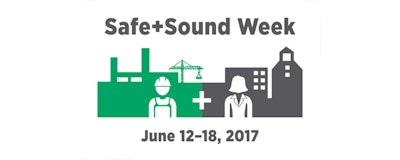
WASHINGTON – The U.S. Department of Labor’s Occupational Safety and Health Administration announced it has designated June 12-18 as “Safe + Sound Week,” a new nationwide effort that calls on organizations of all sizes in a wide range of industries to raise awareness of the value and importance of workplace safety and health programs.
Joining OSHA to sponsor the effort are the National Safety Council, American Industrial Hygiene Association, American Society of Safety Engineers and the National Institute for Occupational Safety and Health. In addition, 85 trade associations, industry and professional groups are partnering with the Safe + Sound Week initiative.
“Our nation has made great strides in raising awareness about the importance of workplace safety, yet more than four million workers suffer serious job-related injuries or illnesses annually. We can do better,” said U.S. Secretary of Labor Alexander Acosta.
Participating in Safe + Sound Week can help organizations get their safety and health program started or energize an existing one. While approaches vary, effective programs have three core elements:
Management leadership that commits to establishing, maintaining and continually improving the program. Managers must also provide needed resources to support the program.
Workers who help identify solutions for improvements. A workforce engaged in safety and health programs result in higher productivity, increased job satisfaction and strong worker retention, which combine to increase revenues and lower turnover and recruitment costs.
A systematic “find and fix” approach that calls upon employers and workers alike to examine their workplaces – proactively and routinely — to identify and address hazards before an injury or illness occurs.





















